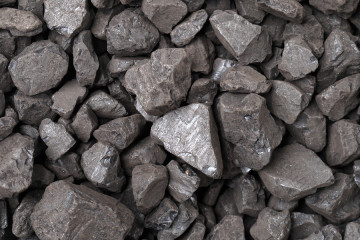Great Iron Ore Wave Set to Peter Out as Shippers Hold Steady

(Bloomberg) —
Rio Tinto Group forecasts its iron ore shipments will remain flat this year or rise by 3 percent at most, reinforcing market sentiment that a wave of new supply is turning into a trickle.
The world’s second-largest exporter expects shipments from Western Australia of between 330 million metric tons and 340 million tons in 2018, the company said Tuesday, confirming guidance published last month. That compares with 330.1 million metric tons recorded last year.
Top exporters “clearly haven’t pushed the envelope too hard” and are showing restraint over additions to supply, Daniel Hynes, a Sydney-based analyst at Australia & New Zealand Banking Group Ltd., said Tuesday in a Bloomberg Television interview. Even as they build cash piles amid higher metals prices, the biggest mining companies are reluctant to commission new operations that’ll deliver any major expansions, he said.
“There’s certainly a different feel about this cycle,” Hynes said. “We’re going to see a lower level of growth in supply in this cycle than in some of the previous ones.”
The four largest exporters will add a forecast 40 million tons in 2018 to iron ore’s 1.6 billion tons seaborne market, down from about 69 million tons last year, Bloomberg Intelligence analyst Andrew Cosgrove wrote in a December note. Higher shipments from the largest producers also will be offset by declining domestic output in China and waning exports from India.
“Concerns about seaborne supply additions from the four biggest iron ore miners in 2018 are somewhat overblown,” Cosgrove said. Absorbing additional supply growth in 2019 may be a tougher task, he said.
Benchmark iron ore last week traded at the highest since August on expectations that demand in China will remain robust. Ore with 62 percent content in Qingdao was at $76.59 a dry ton on Monday, higher than last year’s average price of about $71.36 a ton, according to Metal Bulletin Ltd. data. Rio fell 0.7 percent to A$81.21 at 11:24 a.m. in Sydney.
Rio closed its Hope Downs 4 mine in Australia for two weeks in December, after the operation met annual targets early, amid a “focus on value over volume,” the company said in the statement. The exporter could chose to lower or raise annual shipments in future, based on demand, Chief Executive Officer Jean-Sebastien Jacques told investors last month at a seminar.
Brazil’s Vale SA, the largest exporter, will hold off from immediately using its 450 million tons capacity after it began production at a new mine, according to a December presentation. The shipper expects to produce 390 million tons in 2018 and then about 400 million tons through 2022, according to the filings.
BHP Billiton Ltd. forecasts total full-year shipments from Australia to rise to between 275 million to 280 million tons, from 268 million tons in fiscal 2017, the producer said in a July statement. Fortescue Metals Group Ltd., the fourth-largest exporter, expects shipments to hold flat at about 170 million tons a year, according to a July forecast.
Growth in exports from Australia will decline to 1.7 percent in 2019, from 5.4 percent this year, Australia’s Department of Industry, Innovation and Science said this month in a report. The forecaster sees Brazil’s supply rising 4.2 percent in 2018 and 6 percent next year.
Other highlights from Rio’s production report:
Iron ore shipments from Australia in the three months to Dec. 31 jumped 3 percent to 90 million tons, from 87.7 million tons a year earlier, beating a 88.7 million ton median estimate among six analysts. Mined copper output rose 11 percent to 148,600 tons from a year earlier, beating a 137,500 tons estimate among five analysts surveyed by Bloomberg. Production was boosted by higher output at Chile’s Escondida, and as Rio received about 5,700 tons from the Grasberg joint venture with Freeport-McMoRan Inc. The producer’s Oyu Tolgoi mine in Mongolia is evaluating a $155 million tax assessment from the nation’s tax authority, the statement said. Rio expects to complete the sale of its Dunkerque smelter in France for $500 million in the second quarter of 2018, the producer said. Sanjeev Gupta’s Liberty House Group this month agreed to acquire to plant, which has annual capacity of 270,000 tons of aluminum.




No Comment